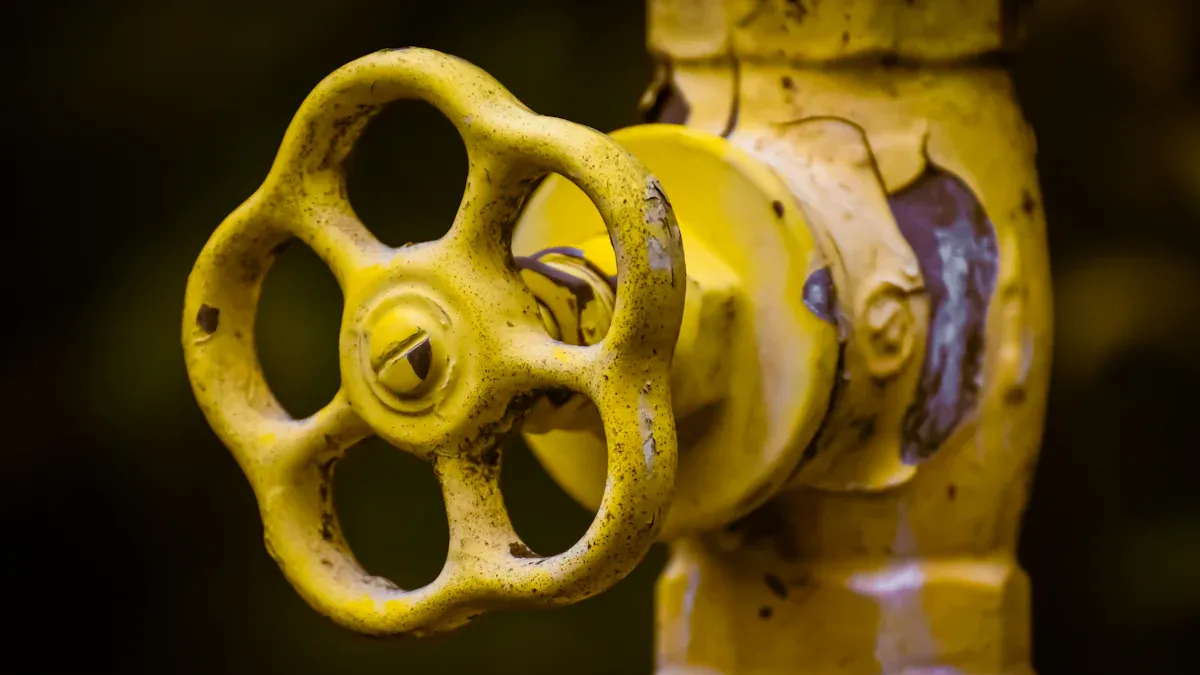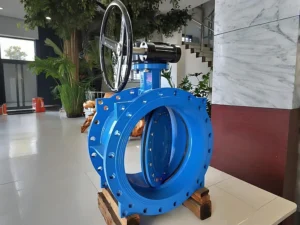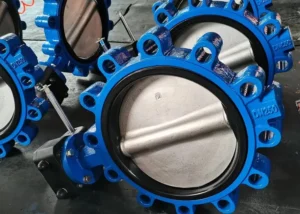
A gate valve changes how liquids move by moving a metal gate up or down inside a pipe. This valve is good for stopping or letting water flow in water and factory systems. It lets liquid go both ways, so engineers can make pipelines that are easy to change. When the gate is all the way up, the valve does not slow the liquid much. Knowing how a gate valve works helps keep pipes safe and working well.
Key Takeaways
- Gate valves work by moving a metal gate up or down. This opens or closes the path for liquid. They are good for turning flow on or off. They are not good for controlling how much liquid flows.
- These valves let liquid move both ways. When fully open, they cause very little pressure loss. This helps pipelines work well and stay flexible.
- The main parts are the body, bonnet, gate, stem, seats, and seals. Each part is made from materials that do not rust. They can also handle high pressure and heat.
- There are different types of gate valves. Some are wedge, double-disc, and knife gate valves. Each type works best in certain jobs and places. They are used in water, oil, and gas pipelines.
- Gate valves seal tightly and last a long time. They do not cost much. But they open and close slowly. You must use them carefully to stop damage and leaks.
Operation
How Gate Valves Work
A gate valve uses a simple but effective mechanism to control the flow of liquids. The main part inside the valve is called the gate. This gate moves up and down in a straight line, which engineers call linear motion. When someone turns the handwheel or actuator, the stem inside the valve moves the gate. If the gate lifts all the way up, it leaves the path open for liquid to flow freely. If the gate drops down, it blocks the path and stops the flow completely.
Note: The gate usually has a wedge shape. This shape helps the valve seal tightly when closed, so no liquid leaks through.
Here is how the process works step by step:
- The operator turns the handwheel or actuator.
- The stem moves the gate up or down inside the valve body.
- When the gate is fully raised, it sits out of the way, allowing liquid to pass with almost no resistance.
- When the gate is fully lowered, it blocks the flow path and shuts off the liquid.
Gate valves are designed for on-off service. They work best when either fully open or fully closed. If someone tries to use a gate valve to control or throttle the flow by leaving it partly open, the liquid can hit the gate and cause damage. This can lead to leaks or even valve failure. For this reason, engineers do not use gate valves for flow regulation.
A table below shows the main features of gate valve operation:
| Feature | Description |
| Shutoff Mechanism | Linear motion, gate moves up and down |
| Flow Path | Fully open gate gives straight, unobstructed flow |
| Pressure Drop | Very low when fully open |
| Service Type | On-off (not for throttling) |
| Seal | Wedge-shaped gate for tight shutoff |
| Operation | Manual or automated via handwheel or actuator |
Flow Control
Gate valves provide excellent flow control for starting and stopping liquids in a pipeline. When the valve is open, the liquid flows straight through with little turbulence or pressure loss. This makes them ideal for systems where engineers want to keep the flow as smooth as possible.
Gate valves also allow bi-directional flow. This means liquid can move in either direction through the valve. The design does not favor one direction over the other. This feature makes installation easier and gives engineers more flexibility when designing piping systems. In some industries, such as water supply or chemical plants, this flexibility helps reduce downtime and maintenance.
- Gate valves have a full bore design, so the opening inside the valve matches the size of the pipe.
- They support bi-directional flow, which means liquid can travel either way.
- This design helps plants maintain efficiency and reliability, even under tough conditions.
Tip: Always use a gate valve for on-off control, not for adjusting flow. Using it for throttling can damage the gate and seat, leading to leaks or costly repairs.
Gate Valve Components

Body and Bonnet
The body and bonnet are the main parts of a gate valve. The body connects to pipes and holds the inside pieces. Makers use strong metals like cast iron or stainless steel. These metals stop rust and make the valve last longer. The bonnet covers the top and holds the stem and moving parts. Both the body and bonnet must hold pressure and stop leaks.
There are different bonnet types. Bolted bonnets are easy to fix and work for high pressure. Welded bonnets are lighter and smaller but cannot be taken apart. Pressure-seal bonnets are best for very high pressure. The seal gets tighter as pressure goes up.
Gate or Disc
The gate or disc moves up and down to start or stop flow.
- Solid wedge gates are simple and strong for most jobs.
- Flexible wedge gates bend with heat changes and help stop leaks.
- Split wedge gates have two parts for a better seal and work well with temperature changes.
- Knife gates cut through thick or dirty liquids, so they are good for paper or mining.
Gates can be made from stainless steel to stop rust. Carbon steel is used for high pressure. Bronze or copper-nickel is used in the sea. The shape and metal of the gate change how well it seals and how long it works.
Stem and Actuator
The stem links the handwheel or actuator to the gate. It moves the gate up or down when turned or moved.
- Rising stems go up as the valve opens, so you can see if it is open.
- Non-rising stems stay in place and save space in small areas.
Actuators can be turned by hand, by electricity, or by air. Pneumatic actuators can open or close a valve in about 4 seconds. This makes them fast and dependable. Position feedback systems help keep the valve in the right spot, even if pressure changes.
| Stem Type | Visual Position | Space Needed | Best Use |
| Rising | Yes | More | Easy checks, clean fluid |
| Non-Rising | No | Less | Tight spaces, dirty fluid |
Seats and Seals
Seats and seals help stop leaks in the gate valve. The seat is where the gate presses to block flow.
- Metal seats are strong but may let tiny leaks happen, especially when hot.
- Soft-seal seats use rubber like EPDM or NBR for a tight seal, but only up to about 80°C.
Makers often coat the valve body with epoxy to protect it from water, acids, and salt. Many O-rings and dust rings on the stem keep dirt and water out. This helps the valve last longer.
Soft-seal designs do not have grooves that trap dirt. This keeps the valve clean and helps it seal well for a long time.
Gate Valve Types

Wedge Gate Valves
Wedge gate valves use a wedge-shaped gate to stop or let liquid flow. Solid wedge types have one strong piece. They work well in places with high pressure and heat. Flexible wedge valves have a split gate joined by a bendy part. This helps them handle hot and cold changes better. It also lowers the chance of leaks. Split wedge or parallel disk valves have two pieces held by a spring. These seal well even when pressure is low. They do not jam easily. But they cost more and are harder to fix.
- Solid wedge: Best for steady, high-pressure water or steam pipes.
- Flexible wedge: Good for places where the temperature changes a lot.
- Split wedge: Useful in pipes where pressure goes up and down often.
Cast iron and ductile iron are used in water pipes. Stainless steel and carbon steel are best for oil, gas, or chemical plants.
Double-Disc Gate Valves
Double-disc gate valves use two discs to close the flow path. This design gives a tight seal and better control than single-disc valves. Many places like oil and gas, power plants, and water treatment use these valves. They are reliable and work well.
- The two-disc design makes a strong seal and keeps pressure steady.
- These valves need less force to use, so they last longer and save energy.
- They work with water, oil, or gas, and handle many temperatures and pressures.
- They open and close fast, which is good for emergencies.
- The strong build means less fixing and fewer repairs.
Knife Gate Valves
Knife gate valves have a sharp gate that cuts through thick or dirty liquids. They work well in mining, paper, and wastewater jobs. The knife shape stops clogs and keeps the valve working. These valves often use stainless steel or special metals to stop rust and wear.
- Knife gate valves are strong and good for fire safety and tough jobs.
- They give good control, even with thick or solid stuff in the flow.
Rising vs Nonrising Stem
The stem links the handwheel to the gate. Rising stem valves show if the valve is open because the stem moves up. Nonrising stem valves keep the stem in place, so they fit in small or underground spaces.
| Feature | Rising Stem Valve | Non-Rising Stem Valve |
| Stem Movement | Stem moves up and down so you can see it | Stem stays still; gate moves inside |
| Visual Position | Easy to see if open or closed | Hard to tell position |
| Maintenance | Easier to fix | Harder to reach stem |
| Space Needed | Needs more room above | Fits in small spaces |
| Cost | Usually costs more | Usually costs less |
| Best Use | Above ground, high pressure | Underground, tight spaces |
Rising stem valves help workers see if the valve is open or closed. Nonrising stem valves keep the stem safe from dirt and damage, so they are better for buried or crowded places.
Pros & Cons
Advantages
Gate valves have many good points in piping systems.
- They shut tightly, so leaks are less likely and systems stay safe.
- When open, liquid moves straight through with almost no slowing down. This means pumps and other machines do not need to work hard.
- These valves let liquid go both ways, so they fit many setups.
- Their strong build makes them work well in tough places like oil, water, and power plants.
- Many companies use these valves for full open or closed jobs, which helps them last longer.
- They usually cost less than other valves, so they are good for big projects.
Tip: Gate valves are best when you need them open or closed for a long time. They are not made for changing often.
A table below shows how gate valves and ball valves are different:
| Feature | Gate Valve | Ball Valve |
| Operation Method | Linear motion (multi-turn) | Rotational (quarter-turn) |
| Flow Regulation | Not ideal for throttling | Not suitable for throttling |
| Sealing Mechanism | Gate wedge against valve seat | Ball with hole between seats |
| Opening/Closing Speed | Slow | Fast |
| Size and Footprint | Larger | Compact |
| Maintenance Needs | Higher | Lower |
| Cost | Generally lower | Slightly higher |
| Durability in Harsh Media | Moderate | High |
| Best Use Cases | Water, oil, fire protection | Gas, chemicals, high-pressure flow |
Limitations
Gate valves also have some problems.
- They open and close slowly because the gate moves a long way. This can be bad if you need to shut off fast.
- You cannot control flow well with them. If you try, the valve can shake, wear out, and get damaged.
- The gate and seat rub together, which can scratch and wear them out. This is hard to fix and may cause leaks later.
- Fixing them is tough because there are many parts to take apart.
- In rough places, the valve can rust if it is not made from the right metal.
- Leaks can happen if the pressure is very low, which can make things unsafe.
- The valve is big and heavy, so it does not fit well in small or light pipes.
Note: Only use gate valves to turn flow on or off. This keeps them working longer and stops damage.
Applications
Water Supply
Cities and towns use gate valves in big water pipes. Workers put these valves at main spots and side lines. If a pipe needs fixing, they close the valve to stop water in one part. This does not stop water everywhere. Water plants use these valves to shut off tanks and pumps. Cast iron and ductile iron are used because they do not rust and last long. Many water systems use AWWA rules to keep things safe and working well.
Gate valves help water systems work without problems. They let workers stop water fast for repairs or emergencies.
Oil & Gas
The oil and gas industry uses gate valves to keep pipelines safe. These valves seal tight and do not slow oil or gas much. The United States has over 190,000 miles of oil pipes. Most pipes use gate valves at important places. Companies pick these valves because they handle high pressure and tough jobs. Newer valves seal better, use stronger metals, and can be controlled from far away.
- Gate valves are the most used valves in pipelines.
- Better coatings and metals make them last longer and stop rust.
- Automation and smart tech help watch valves and fix problems early.
- Rules for clean air mean companies want valves that do not leak.
North America uses these valves the most, especially for shale gas. Asia Pacific is using more as they build new pipes and need more energy.
Industrial Uses
Factories and power plants use gate valves in many ways. Steam systems use steel gate valves with welded pipes for medium pressure. Wastewater plants use iron gate valves for dirty water. Power plants need special valves made from strong metals for high heat and pressure. Chemical plants use stainless steel valves to stop rust from harsh chemicals.
The court case Cameron Iron Works, Inc. v. Edward Valves, Inc. shows how seal types and metals change how valves work. Some valves use bronze rings for strength. Others use special metals to seal better under pressure. This shows gate valves work well in hard factory jobs.
| Industry/Application | Gate Valve Usage Details | Materials and Standards | Operating Conditions and Notes |
| Steam Systems | Linear gate valves are best for welded pipes; steel is better than cast iron for welding | Steel materials | Medium steam pressure and heat |
| Waterworks | Cast and ductile iron for big pipes; bronze for small pipes; valves made for low pressure (under 200 psi) | Cast iron, ductile iron, bronze; AWWA rules | Normal temperature; rubber seals for tight shutoff |
| Wastewater | Iron gate and check valves are common; rules are not as strict as for drinking water | Iron valves; AWWA rules | Low pressure, dirty water |
| Power Generation | Gate valves are main choice for on/off in power plants; ball valves are also used more now | High-temp alloys (F91, F92, Inconel, stainless steel) | High pressure (up to Class 4500), high heat, and changing conditions |
| Oil & Gas Production | Wellhead valves, including gate valves, handle up to 10,000 psi; API 6A rules are used | Strong metals per API 6A | Very high pressure, used in wells on land and at sea |
| Refineries & Petrochemical | Gate valves are the most common; API 600 rules; thicker walls help stop rust | Carbon steels (WCB, A-105), chrome/moly steels, stainless | High heat and harsh fluids; pressure classes 150-1500 |
| Chemical Plants | Use both gate and ball valves; API 603 gate valves are lighter; 316/316L stainless steel is used a lot | Stainless steels (316/316L, 317, 347, 321), Monel, Alloy 20, Inconel | Lower pressure (Classes 150 and 300); harsh fluids need rust-proof metals |
| Pipelines & Compressor Stations | Gate valves are used a lot in compressor stations; pipeline valves follow API 6D | Different metals per API 6D | Keep pressure and flow steady; valves used to stop and control flow |
Gate valve operation is very important for safe flow in many jobs. Every part, like the body and stem, helps the valve work well. Picking the right gate valve makes sure water, oil, and factories run smoothly. New ideas are changing how these valves are made:
- Smart technology lets people watch valves and fix problems early.
- Better materials make valves last longer and stop rust.
- 3D printing helps make parts quickly and with great detail.
- Green designs save energy and lower pollution.
- New designs help with things like hydrogen and clean energy.
Engineers will see even better valves as technology keeps getting better.
FAQ
What is the main job of a gate valve?
A gate valve starts or stops the flow of liquid in a pipe. It does not control how much liquid passes through. Engineers use it when they need a full open or closed position.
Can a gate valve handle both directions of flow?
Yes, a gate valve allows liquid to move in either direction. This feature helps engineers design flexible piping systems. It also makes installation easier.
Why should you not use a gate valve for throttling?
Gate valves do not work well for throttling. If left partly open, the liquid can damage the gate and seat. This damage may cause leaks or early failure.
How do you know if a gate valve is open or closed?
A rising stem gate valve shows its position. When the stem sticks out, the valve is open. Non-rising stem valves do not show this, so workers must check another way.
What materials do manufacturers use for gate valves?
Manufacturers use cast iron, ductile iron, stainless steel, and carbon steel. The choice depends on the job. For example, stainless steel resists rust, while cast iron works well in water pipes.







